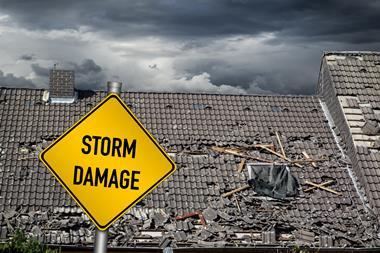The identification of new and successful techniques for saving costs is an important aspect of the resolution of subsidence claims in the UK.
Richard Radevsky, of Resolve, examined how other countries have tackled the problem in an ABI report.
However, his report's conclusions focus on a desire to achieve change by reducing claimants' expectations.
Unfortunately, Radevsky does not seem to understand that simply telling the insured in the UK that the cracks in his property are not as important as he thinks, is not a straightforward option.
The private home in the UK has a dual role. It is both a home and usually a family's major source of financial security.
Securing this investment through insurance is one of the everyday realities of life.
Radevsky correctly identifies that UK underwriters pay close attention to the likelihood of on-going subsidence damage occurring.
If the building is, or is likely to be, affected then cover will be withheld.
The consequence of this is that a new lender will be reluctant to advance a loan on the property with the result that it becomes significantly devalued.
Insurers should, therefore not be surprised when claimants pay equally close attention to crack damage when seeking underpinning and sound repair for their properties.
Nor should they wonder at lenders which are not keen to see their assets suffering on-going damage, loss of value, and negative equity.
Repairs to the superstructure will ultimately rest on the claimant's side, unless underwriters ease their cover criteria.
This is how insurers repeatedly shoot themselves in the foot. By failing to give a lead they prevent the change of attitude - which Radevsky is promoting - from happening.
Their stance should not be at all surprising, since the presence of an insurable risk (even if not as real as might otherwise be suggested) is why property owners and lenders seek insurance cover.
This relationship works fine while claims settled by insurers match the perceived risk events, and provided that claimants remain satisfied.
The last time Radevsky devised a radical approach to saving money in the early 90s, he suggested rejecting "unnecessary" underpinning which has saved at least one insurer millions.
These proposals saved expenditure in the short term but in the medium term, larger, rejected claims have built into a backlog.
Other properties which have not been adequately repaired in the early 1990s are now the subject of much more serious claims. By simply refusing to settle a claim, an insurer just stores up a more serious claim further along the line.
The press has had a field day revealing a procession of problem cases. This, in turn, has prompted calls for independent regulation of the industry and bred a lack of confidence in the organisations involved - a situation which seems to be growing.
The comparisons between different countries set out in Radevsky's report are interesting and useful but, I challenge whether they support the possibility of changing attitudes in the UK.
His statement "the introduction of subsidence insurance has increased the level of householder's anxiety (probably disproportionately) to that warranted" is not adequately justified. Nor does he explain where the research shows disproportionate anxiety and, if it does, how it can be changed.
In the past couple of years, I have seen a growing number of claims which appear to have been cynically rejected by loss adjusters/insurers and which have moved, or are moving, into the legal arena.
If this is a reflection of hardening attitudes in the industry towards claimants (as implied by the ABI report), this can only be bad news all round.
If insurers expect claimants to pay ever increasing premiums without qualm then the insured must be confident that insurers will look after their interests when things go wrong.
Apart from anything else, there is a general moral principle involved not just a business one. If insurers are offering cover against subsidence and/or heave the customer should not be left with all of the problems following the occurrence of the risk. Least of all, they should not have to worry about getting their property properly repaired or find it impossible to reinsure it or sell, even after paying out the elevated £1,000 excess for subsidence claims.
The average householder buys their house and its insurance (usually insisted upon by the lender) in good faith and after years of premium payments has a right to expect that insurers will pick up the bill if the property subsides. Just as a car would be repaired without question after an accident.





































